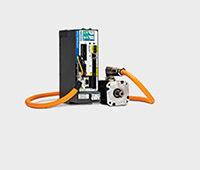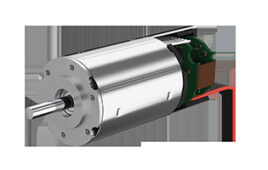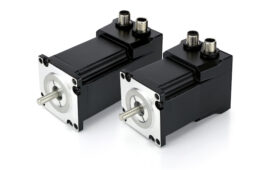When a customer asked Advanced Machine & Tool Corp. (AMT) to start using EPLAN Software & Service electrical drawings for the machines it ordered, AMT quickly found that using EPLAN for all its software development projects offered a number of productivity improvements.
AMT switched from AutoCAD Electrical to EPLAN because time-consuming product development steps—such as device tagging, wire numbering, and machine design standardization, including archiving and re-using recurrent content—have been simplified and accelerated.

EPLAN design software offers accelerated design for a variety of specialized machine projects.
Engineers at AMT made the switch after a major auto industry customer made a point of stipulating it wanted EPLAN electrical drawings for the machines it orders to expedite the production of documentation and improve their accuracy.
Finding it was a better option, the engineers at AMT began a gradual process of switching all electrical and fluid power assignments to the EPLAN Platform. “I thought we were comfortable with our old CAD system, but I sure wouldn’t go back to it now,” said electrical engineer Mark Lohrman.
AMT specializes in the building of coiling and winding equipment and other machines used in the production of electric motors, generators, alternators, and other devices. The engineering phase of fulfilling an order can take as little as three days, or as much as 60 weeks for elaborate projects, but a typical order involves a customer wanting a single machine to produce a new motor or for augmenting or streamlining current production.
“It might be as simple as adding a machine similar to one they have now, or showing us a product they want to produce and asking, ‘How do we manufacture it,’” said Lohrman.
AMT took a conservative approach to implementing EPLAN. Projects were benchmarked to verify productivity gains and over time, more and more projects were done in EPLAN. “Now we are at a point where regardless of what is being released, we do it in EPLAN,” said Lohrman.
Switching to EPLAN has made it possible to generate accurate and well-structured documentation faster than previously possible.
For an assignment that might have taken two weeks working in AutoCAD, the biggest savings using EPLAN — about 23-28 work hours — were achieved in four areas:
- Previously, device tagging and wire numbering were manual tasks. Now they have been automated along with the generation of the actual device tags, wire numbers and terminal tags. AMT engineers use the internal functionality of EPLAN to set up the printers by transmitting an Excel spreadsheet with all the data. This has resulted in 4-5 hours saved.
- Error-free terminal diagrams and BOMs are automatically generated, resulting in five hours saved.
- Standard circuitry is archived and re-used from project to project, saving 8-12 hours.
- Fluid schematics have been integrated into the overall project, eliminating errors with device naming and missed components. This has saved six hours.
For larger projects, the savings are proportionately greater. In addition, the ability to archive macros is key, as the company continues to expand this function. “Automatic numbering is a big thing for us,” said Lohrman. “I can go to the parts list and pick out a part. If there is a macro associated with it, I am set.”
The benefits of archiving and re-using standard content are growing with the amount of content items stored as EPLAN macros: now more than 300 processes and more than 500 components.
“Drawings are archived and can be easily found. I can bring up a complete set of drawings in just a few minutes — I don’t have to go back into paper files. While the vast majority of our machines are custom, there are a few we repeat with minor adjustments. With EPLAN, we can pull up the drawings, make minor adjustments quickly and easily, and spit out a set of plans for it.”
AMT engineers also use another source of parts data, EPLAN Data Portal, to download component data sets including Allen Bradley, WAGO and other information.
“Data Portal is easy to use,” said Lohrman. “It’s a major time saver not having to go through all the pages of documentation to find out measurements. If I want a new part, I always go to Data Portal first.”
Finally, EPLAN helps integrate engineering and has made for a smooth transition. “We get a quick turnaround when we make a request—usually within the day. (An EPLAN support technician) can go online and see my screen, he can see the problem, which makes trouble-shooting so much easier,” said Lohrman.
AMT’s way forward with EPLAN is likely to include closer integration of electrical and fluid design as more engineers are trained in EPLAN Fluid. That way, two disciplines could work side by side to accelerate projects and optimize outcomes. Other future steps might include adopting EEC One—the new EPLAN Engineering Center One, to begin designing machines mechatronically in functional units.
EPLAN Software & Service
www.eplan.co.uk
Filed Under: Machine tools + subtractive manufacturing, ENGINEERING SOFTWARE, FLUID POWER, MOTION CONTROL, Switches





Tell Us What You Think!